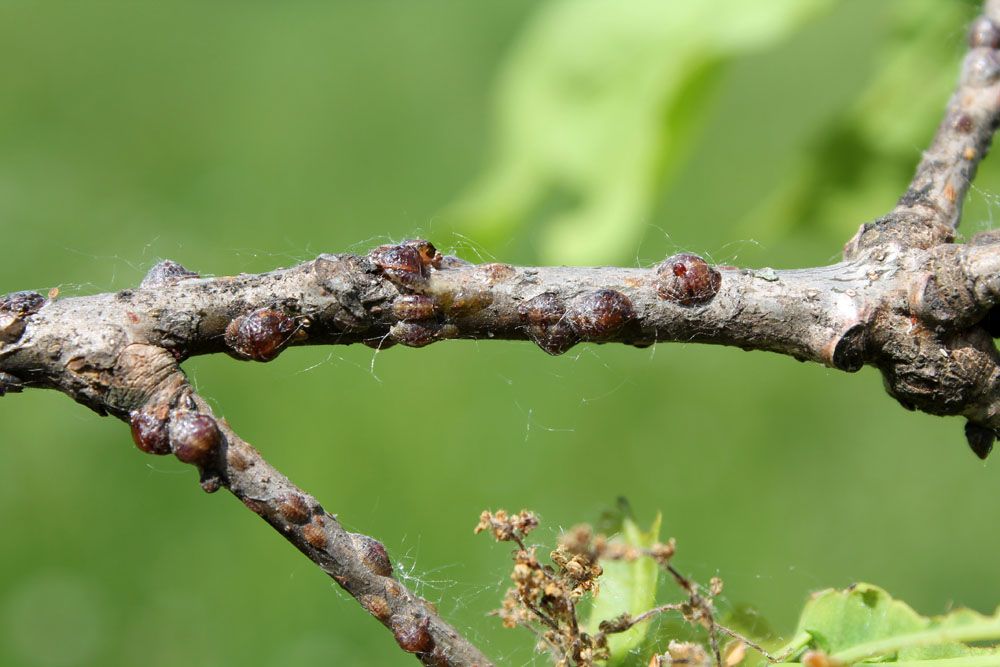
European Fruit Lecanium – Parthenolecanium corni
European Fruit Lecanium: Appearance, Territory, Damage and Life
Latin name: Parthenolecanium Corni
Appearances: This pest’s nymphal stage is flat, spindle-shaped, and brown. Approximately 3 mm in size, females are hemispherical to oval, convex, smooth, shining brown or reddish brown. On occasion, a fine white powder may be applied to them. The waxy coating of the male is smaller, flatter, and longer, almost translucent, and has ridges running the length of the back. Adult males are tiny, fragile, clear-winged insects that resemble little flies and have just one pair of wings. They mate, then perish.
Host plants: The European fruit lecanium can harm pome fruits, many other broad-leaved plants, and stone fruits the most frequently. It is a typical pest of both ornamental plants and industrial fruit trees.
Territory: A significant soft scale insect pest of Pennsylvania’s shade trees and other woody ornamental plants is the European fruit lecanium.
Damage insect caused: On the lower leaf surface, severe scale infestations may frequently accumulate. Damage from feeding can result in curled, chlorotic (yellow), and possibly prematurely falling foliage. Smaller infected branches become weakened from feeding damage or, in rare instances, may die. Additionally, a significant amount of honeydew (a sticky, sugar-rich fluid) is released when this soft scale species feeds on leaves and twigs. A black sooty mold called honeydew grows on a substrate called honeydew, which can give the foliage, twigs, branches, and any other surface under an infected plant a blackened appearance. The production of nourishment by a plant may be hampered by an abundance of sooty mold (photosynthesis).
Life cycle and habits: Males search for females to mate with after emerging from their coverings, but they die within a few days. In May, females stay hidden under their shells to lay their eggs. The mother shrinks away during the egg-laying phase, and eggs loosely fill her shell. Eggs hatch into exposed, mobile crawlers between the middle of May and the beginning of June. Crawlers settle and feed until the beginning of fall after locating a suitable feeding location, which is typically on the undersides of leaves. The nymphs migrate back to the shoots of the current year before leaf drop and settle there once more, this time building a harder shell for protection. They spend the winter there before starting to feed and grow once more in the spring. Each year, there is only one generation of European fruit lecanium.
